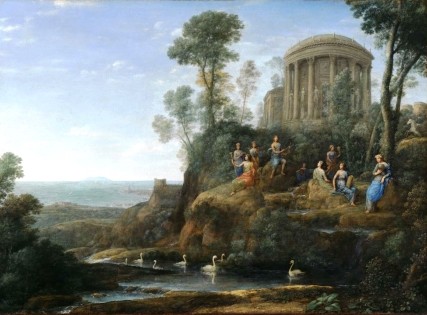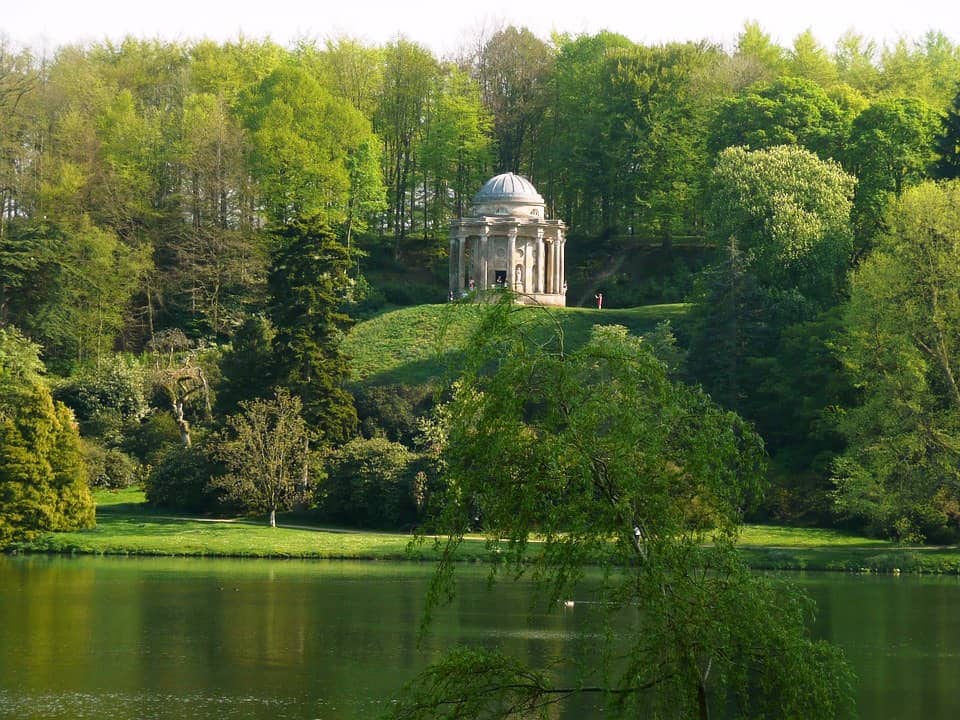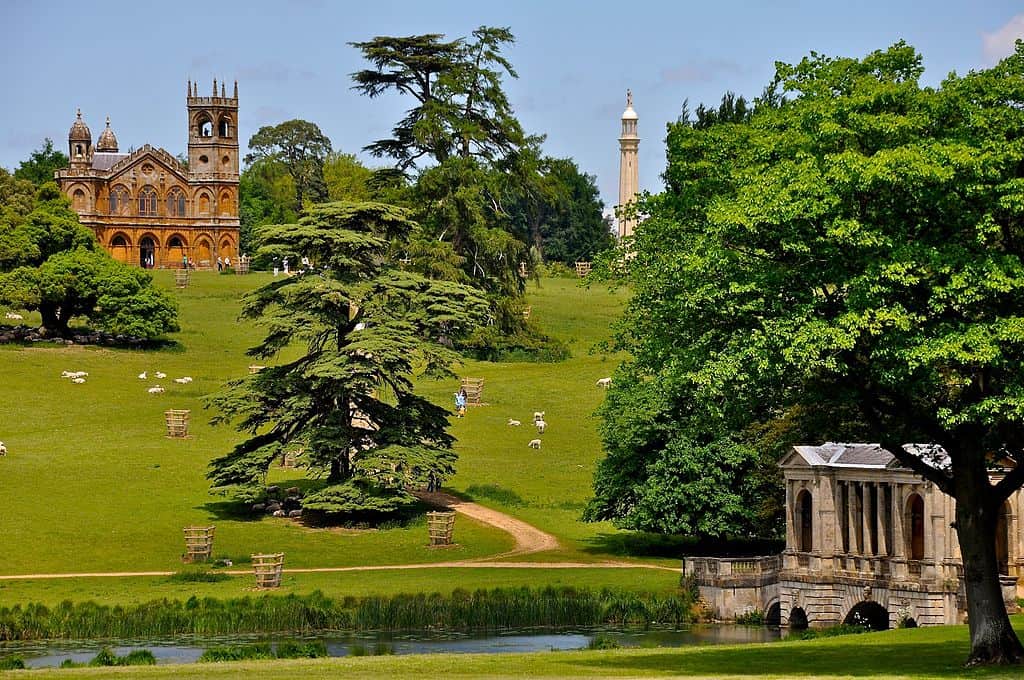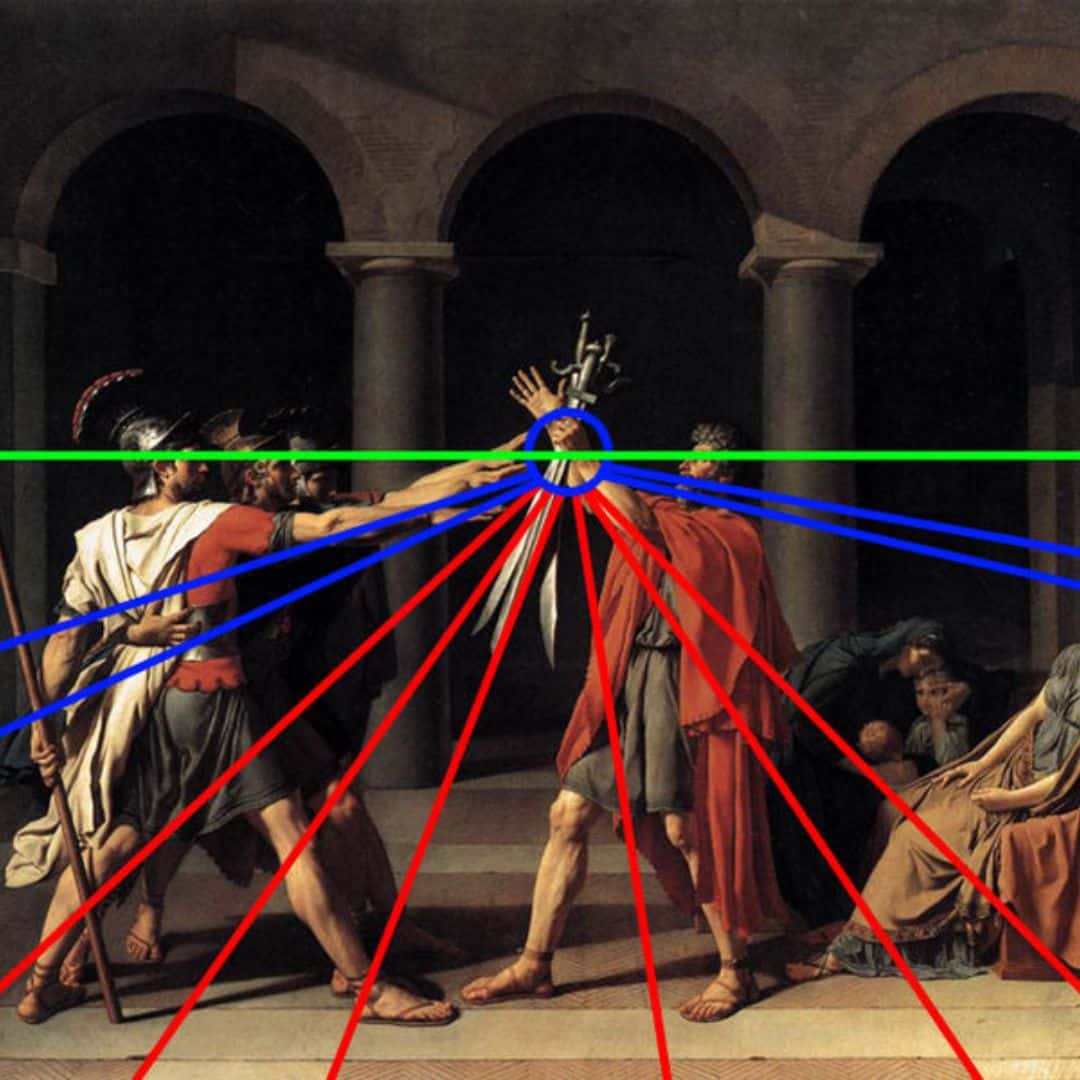The English garden , also called the English landscape garden was a style of garden that emerged in England in the early 18th century and spread throughout Europe, replacing the jardin à la française.
This new garden style was strongly influenced by literature and philosophy.
english garden | the influence of painting
The design of the new garden was inspired by landscape paintings by Claude Lorrain (1600-1682) and Nicolas Poussin (ca.1594-1665).
They developed an interest for countryside landscapes, encouraging a whole new way of looking at nature while inviting its exploration.

Claude Lorrain Apollo and the Muses on Mount Helicon, 1680
english garden | the influence of travels
The images and descriptions, made by European travelers and missionaries, of the gardens of the old Chinese empire, which had as a basic characteristic the irregularity, the lack of symmetry of the paths and the non-use of topiary, also had an influence on the English garden .
english garden | the romanticism
In addition to these contributions to the development of the new style, the 18th century was marked by the Romantic movement.
It valued feelings, subjectivity, emotion, spontaneity, individual expression, and the search to highlight the beauty of nature and the natural landscape.
natural landscape.
The idea that beauty was found in the natural and free, and not in the artificial and forced of the French parterres, contributed to the birth of the new garden style.
english garden | the concept
A proposal was developed to create an ideal English landscape, in which the natural landscape was recreated through a harmonious reaction between it and the built elements.
A different concept in relation to nature emerged, in which man did not impose himself, but rather sought to harmonize with and admire nature.
The English garden thus emerged as a revolution and opposition against the rigid patterns, symmetry, and richness of detail of the Baroque and Renaissance style.
It proclaimed above all the landscape and the rejection of symmetry, whose aim was no longer to control nature, but to enjoy it.
english garden | the sructure
The English landscape garden was centered on the country house, which was designed not to be admired from the residence, but to be walked through.
By having an asymmetrical orientation, the English garden allowed for a sense of discovery, mystery, and surprise.
The garden’s paths were meant to surprise the walker, leading him to enjoy the landscape as if it was a succession of sceneries that are discovered during a walk.
These scenarios were created and arranged around a specific point of view, highlighting an important element that could be a lake, a temple, or a tree.

Detail of Stourhead Garden, England
Stourhead gardens in this link.
english garden | the architecture
The architectural elements present in this type of garden have a relationship with classical antiquity, but not only.
We find temples, bridges, tombs, obelisks, ruins, Gothic chapels.
And also more exotic forms such as the pagodas, kiosks, and Chinese pavilions that characterized the Anglo-Chinese style.

Stowe Garden, Hawkwell Field, with Gothic Temple, Cobham Monument & Palladian Bridge
Bridges became the most common architectural element in these gardens, more decorative than useful.
Besides not being such an expensive element to build, they still provided a great view point in the garden and were also widely used to delimit the garden and the natural landscape.
english garden | the “sublime Nature”
The English landscaping also emphasized what was called “sublime nature”, scenarios with wild characteristics, with cliffs, waterfalls, and dead trees that were placed near the architectural elements.
All these elements treated in this way were supposed to give the feeling of walking through an ancient and natural forest, with little or no human intervention.




